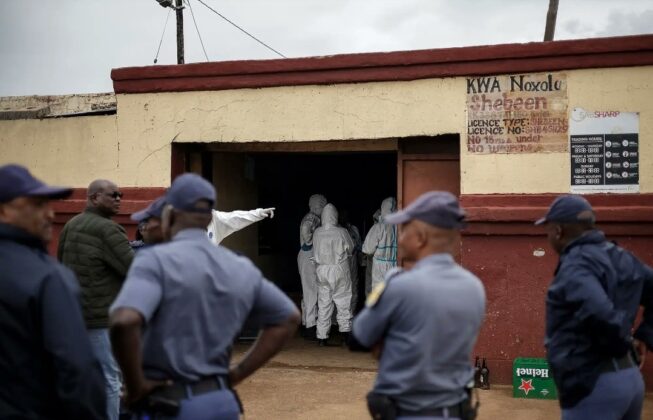
Jim Lovell, the Apollo 13 commander who led one of NASA’s most daring space rescues and became a symbol of courage under pressure, has died at 97 [Image by NASA]
(The Post News)- Jim Lovell, the legendary NASA astronaut who commanded the crippled Apollo 13 spaceship to a safe return to Earth in one of the most perilous space rescues in history, passed away at 97. NASA confirmed his death on Friday, saying he died peacefully in his Lake Forest, Illinois, home.
Lovell, a retired U.S. Navy captain, traveled on four spaceflights Gemini 7, Gemini 12, Apollo 8, and Apollo 13 logging more than 715 hours in space. He was the first person to travel to the Moon twice, but he never stepped on its surface.
Read related article:
Jim’s stoic strength under overwhelming pressure turned a mission-ending disaster into one of NASA’s greatest moments,” Acting NASA Administrator Sean Duffy said. “His pioneering legacy marked our way to the Moon and continues to inspire us as we move forward to Artemis missions and beyond.”.
Lovell’s moment of greatest glory came in April 1970, when Apollo 13, intended as the third moon landing, suffered a catastrophic oxygen tank explosion some 200,000 miles from Earth. As the spacecraft’s power inexorably dwindled, temperatures fell, and carbon dioxide climbed to lethal levels, Lovell ordered crew members Jack Swigert and Fred Haise to jury-rig their lunar module as a lifeboat. After a terrifying three-and-a-half-day ordeal, the astronauts splashed down safely into the Pacific Ocean on April 17, 1970, in NASA’s “successful failure.”
His heroism was immortalized in Ron Howard’s 1995 film Apollo 13, in which Tom Hanks portrayed Lovell. Lovell had a cameo role as the captain of the USS Iwo Jima, the recovery ship that took in the astronauts.
Lovell had already made history before Apollo 13. In December 1968, as command module pilot of Apollo 8 with Frank Borman and William Anders, he helped to complete the first mission by humans to leave Earth’s gravity and orbit the Moon. The Christmas Eve telecast from the mission, reading from the Book of Genesis to an estimated one billion people, was a message of hope in a year of violence that had been marked by war and political assassinations. Anders’ now-iconic “Earthrise” photo on that flight would inspire the environmental movement.
Lovell began his space career with NASA’s second group of astronauts in 1962, the “New Nine.” He flew on Gemini 7 in 1965, completing the first rendezvous of two manned spacecraft with Gemini 6, and on Gemini 12 in 1966, the final flight of the program, with Buzz Aldrin.
Born on March 25, 1928, in Cleveland, Ohio, Lovell lost his father at age five and was raised by his mother in Milwaukee. He graduated from the U.S. Naval Academy in 1952, flew as a Navy test pilot, and logged over 7,000 hours of flight time before joining NASA.
Following his retirement from the Navy and NASA in 1973, Lovell entered the private sector and co-authored Lost Moon: The Perilous Voyage of Apollo 13, the basis for Howard’s movie. He received numerous awards, among them the Presidential Medal of Freedom, the Congressional Space Medal of Honor, and induction into the U.S. Astronaut Hall of Fame.
Tributes poured in from fellow astronauts, politicians, and admirers worldwide. Lovell’s Gemini 12 partner Buzz Aldrin called him “one of my best friends” and praised his “extraordinary legacy” on numerous missions. Tom Hanks remembered him as “the kind of guy who dared, dreamed, and led others to places we would not go on our own.”.
Lovell is survived by his four children. His family, in a statement, referred to him as “our Hero” whose “unshakeable optimism and sense of humor made us believe we could do the impossible.”
“Twice a bridesmaid, never a bride,” Lovell once joked about never having walked on the Moon. But his leadership of Apollo 13 ensured that, in the annals of space exploration, his name will forever be written among the stars.



